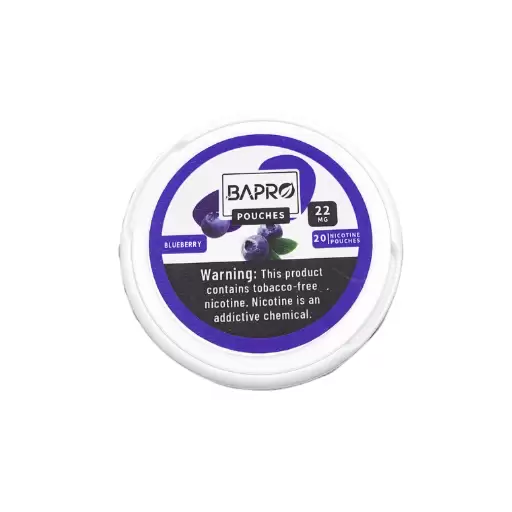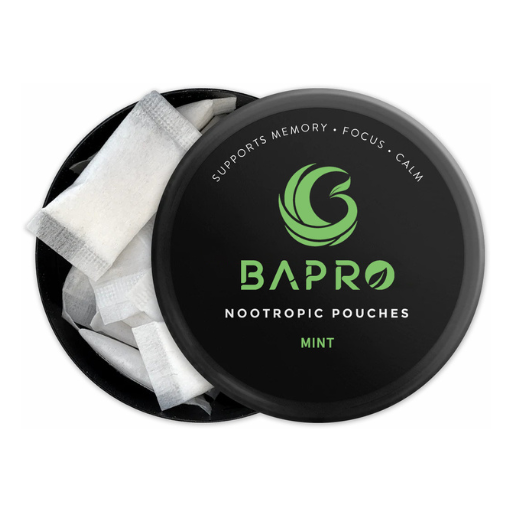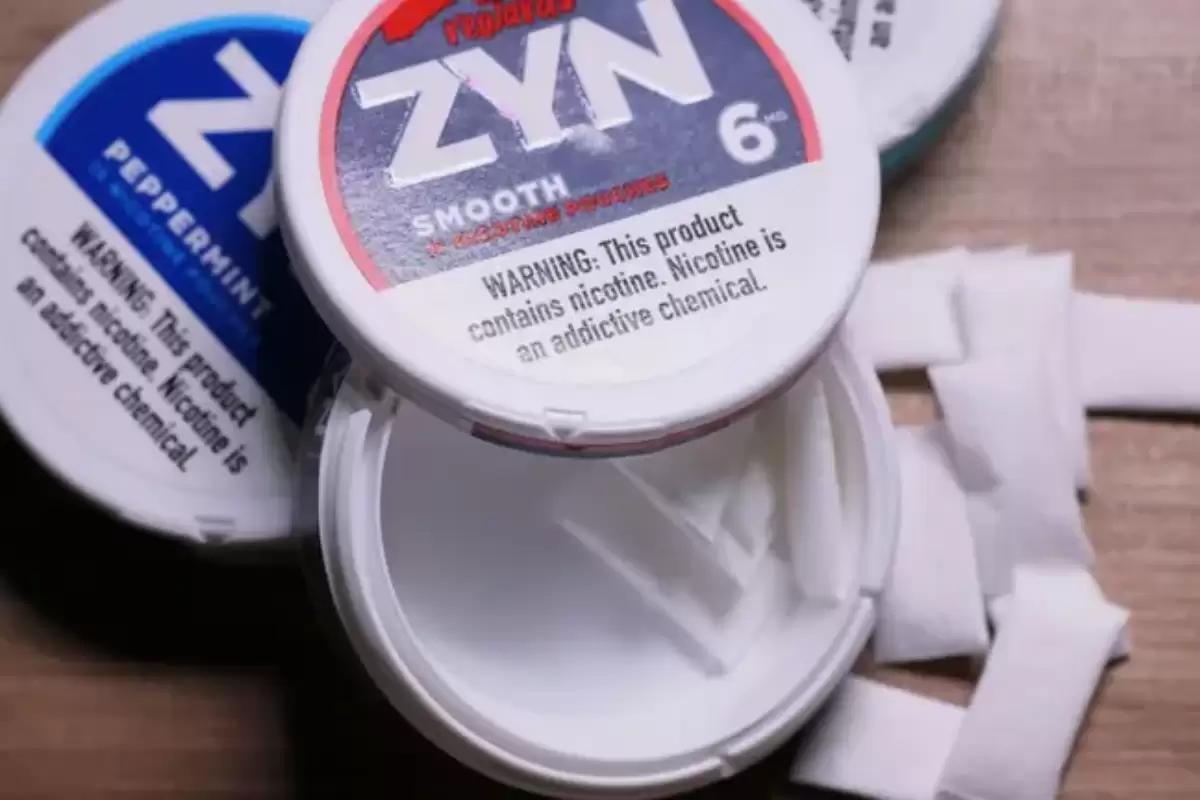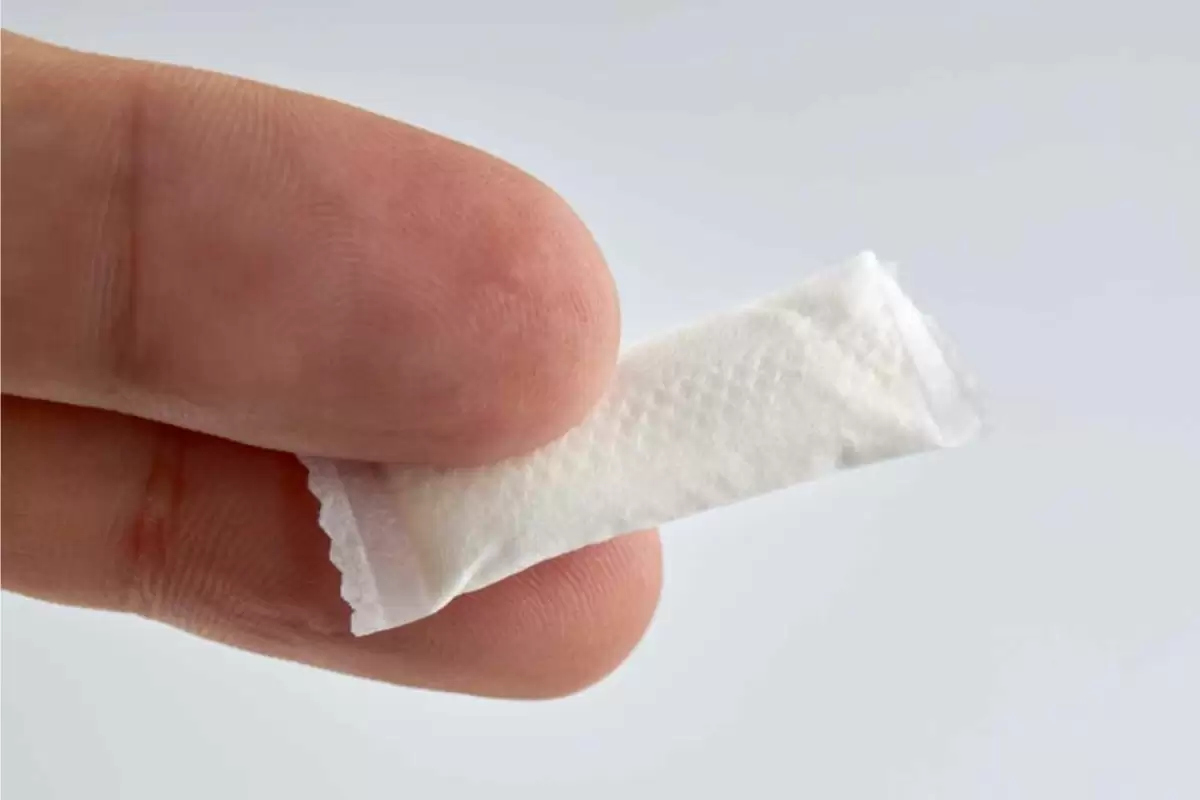Nicotine consumption has undergone an innovation boom in the past decade as smokers seek out healthier alternatives to tobacco and look for cleaner and more socially acceptable ways to consume nicotine. Nicotine pouches and vaping are two of the most popular nicotine-consumption methods used today besides consuming tobacco. As a result, this has benefited the modern-day consumer in terms of offering them more choice and convenience via cleaner alternatives.
Nicotine pouches, offered by the Swedish brand Zyn and others, offer a new form of nicotine, which you keep under your lip and absorb through the gum. Nicotine pouches don’t produce vapour or smoke, so you can use them in the same environments where you might smoke or vape.
The major difference with vaping is the device, particularly how air is being used to transform liquid into a vapour (e juice) which is then inhaled through an e-cigarette, vape pen or mod vapour unit. Vaping has gained a lot of popularity because of it’s ability to mimic the smoking experience while also providing a flavour and nicotine strength that the individual wants. The way vaping works is that it turns liquid nicotine into a mist which users then inhale, creating a feel that is similar to smoking without the same number of harmful byproducts.
The difference between nicotine pouches and vaping can help inform how you use nicotine. There are pros and cons when it comes to using either method when it comes to health, socialising, lifestyle and the environment. As a consumer you might want to understand the various aspects of vaping and nicotine pouches to have a wider and better understanding if tobaccanos are your preferred way of nicotine consumption.

Understanding Nicotine Pouches
Nicotine pouches have carved out a space among alternative nicotine products, offering the benefits of nicotine without the known harms of tar and other chemicals. Below, we’ll consider Zyn to explore why pouch products may be attractive alternatives for consumers.
Case in point is Zyn, a leading brand in the nicotine pouch category Perhaps it’s because pouches offer a unique nicotine experience. Nicotine pouches are small pouches filled with nicotine extracted from the tobacco leaf. The nicotine is then mixed with other food-grade ingredients and packed in a small pouch. When swallowed, nicotine soups saturate the user’s bloodstream. Pouches, in turn, are packed with nicotine extracted from the tobacco plant. In pouches, nicotine combines with other food-grade ingredients and is packed into a small pouch, ready to be put between one’s gums and lips for absorption into the mucous membranes.

The Appeal of Nicotine Pouches
What makes them look appealing to many of their buyers – especially the Zyn brand – is that they’re pretty convenient and less conspicuous than smoking or vaping. They’re generally odourless, there’s no smoke or vapour, and they don’t make the user’s breath or clothes smell. They can be quietly popped into the mouth whenever one wishes, and there’s no need to interrupt a phone call, social conversation or sporting game to use them. And so, while there are undoubtedly many new nicotine pouch users – especially the Zyn brand – who plan to displace significant proportions of their smoking with the new product, there are also undoubtedly be many who see the pouch as providing an alternative way of continuing to use nicotine in environments where smoking is banned. By choosing a pouch one isn’t inflicting the harm of secondhand smoke or vapour on bystanders, which is widely seen as especially appealing and in step with today’s general move towards cleaner and ‘safer’ ways to consume nicotine.
Key Features of Zyn Nicotine Pouches
Zyn’s flavour portfolio is impressive, ranging from mint and citrus to coffee, which makes it a hit with those looking for a pleasant oral nicotine experience that doesn’t leave an unpleasant taste in the mouth like a cigarette does.
Advantages:
- Zyn nicotine pouches come in a wide range of nicotine strengths, and the user can manage their nicotine intake
- This flexibility is beneficial for those who are trying to reduce their nicotine dependency gradually.
Feel free to use Zyn wherever you are; at your desk, on the couch, on the go.The pouches themselves are odorless, easily movable from one side of the mouth to the other, and do not require spitting, helping to make vaping with them more socially acceptable than having to smoke a cigarette wherever you want.
These characteristics and features make Zyn an attractive brand for nicotine pouch consumers in the market to quit smoking or vaping. With an emphasis on quality, consumer safety and product innovation, it’s an industry leader in nicotine pouchets, offering an innovative smoke-free, discreet, enjoyable nicotine experience alternative to traditional smoking and vaping. The consumer in the 21st century is concerned with the freedom to choose and at the fulfillment of those choices. Zyn satisfies those concerns for every nicotine consumer.
Overview of Vaping
This section will explore the intricate process by which popular method of nicotine, explain the products used for this purpose, and describe the development of vaping technology and flavours over time. The result will be a clear understanding of the niche of a newly established but already highly popular route of nicotine intake.

Introduction to Vaping
Vaping refers to the act of vapour inhalation or exhalation through the mouth following the action of drawing on an electrical (electronic) device, commonly known as e-cigarette or vape pen and even simply as a mod. An e-cigarette is ‘a device that provides doses of nicotine … by heating a liquid to the point of vapourisation’ – or as many young people who vape would pronounce it as: ‘a tube with a cloud factory on both ends.’ This was not an original expression, but others had similarly creative ones: ‘a hyper-technological cigarette, cigarette 2.0, the iPhone of smoking’, and so on: the machine of a smoke-free future used for fun, despite the nicotine use for therapy. The new phenomenon in the market was redefined as a novel alternative to smoking that promised to retain the ritual of tobacco smoking and eliminate its combustion hazards. This is what made vaping popular and widespread. Vaping uses an electrochemical process that vaporises not the tobacco leaf but a liquid solution that contains nicotine, often along with other flavours (up to 7,700 choices, according to one retailer) and in some cases, additives.
Types of Vaping Products
- E-cigarettes: Vaping devices that resemble cigarettes and are the simplest v, lightweight and disposable – often used by vaping novices.
- Vape Pens: The next stop up from e-cigs, slightly larger and able to hold more battery power than those. They also allow for the user to refill the liquid, or ‘e-juice’, inside.,,They are a choice for those moving on past the virgin phase of their vaping.
- Mods: The next step up from ‘vapes’, mods are tailor-made vaping devices that allow the user to adjust wattage (power), temperature and airflow to engage in their preferred ‘vaping style’. Mods are receptive to many kinds of e-liquid and are suitable for hard-core vapers.
The Evolution of Vaping Technology and Flavors
While technologies have improved over time – batteries can last longer, and vaping devices produce more vapour and often greater flavour through sub-ohm vaping, where the devices operate at less than one ohm – the basic technology remains the same.
One of the greatest features of vaping is its range of flavours available: from tobacco- and menthol-based e-liquids to exotic fruits, desserts, coffees, and even cocktail-type flavours. This variability in flavours has likely contributed to vaping’s widespread appeal, as users have the opportunity to sample new blends and customise their product.
Advancements in vaping technology alongside the ability for a greatly expanded range of flavours, have made vaping a viable, pleasurable and highly adaptable delivery system for nicotine. The growth of vaping is part of the larger picture towards a consumer-driven, increasingly harm-reduced landscape of products that allow an individual ability to choose, change and, ultimately, customise their desired patterns of nicotine consumption. Irrespective of what happens with the myriad nicotine products currently being marketed and created to satisfy the desire for nicotine, vaping will remain at the forefront of that shifting landscape.
Zyn vs Vaping: Health Considerations
Whether it is safer to use nicotine pouches like Zyn or to vape is a topic of ongoing debate among consumers and health authorities alike. This paper will examine the comparative safety of these two common forms of nicotine delivery, comparing health authority perspectives with views on regulatory status.
Comparative Analysis of Health Implications
Nicotine pouches such as Zyn are also advertised as being comparatively ‘clean’ in terms of both its users and those around them. Unlike smoking and especially vaping, nicotine pouches don’t combust or inhale vapour – so there’s no tar, and arguably a lower risk of exposure to many of the other noxious byproducts of cigarette smoke. By not burning anything or inhaling vapour, e-free smokeless tobacco ostensibly offers its users a more socially conscious way to administer nicotine than the alternatives.
Although vaping eliminates combustion – the process at the heart of smoking that releases carcinogens to the lungs – the practice involves breathing in vapours containing nicotine along with any additives and other chemicals added by the manufacturers. Sure, Public Health England has said that vaping is 95 per cent less harmful than smoking tobacco-containing cigarettes. But this is being said on the basis of existing evidence, and potential risks to long-term health and safety are still unknown. Fears have been heightened in recent years by cases of lung injuries resulting from vaping in certain products, leading to calls for greater regulation and oversight.
Insights from Health Experts
Public-health authorities recognise that nicotine pouches and vaping entail some exposure to the carcinogens present in cigarette smoke, but not to the full extent. Nicotine – whether from pouches or vapes, is addictive, and evidence shows its use can affect heart health and blood pressure. Smoking is by far the most harmful of the tobacco delivery options. At the Global Health Institute at Boston University, my colleague Dr John Smith argues that taking the entire spectrum of health into account, the healthiest way for adults to consume nicotine is to stop altogether, and that transitioning from smoking to nicotine pouches or vapes is safer. Nicotine pouches and vapes provide a relatively low-risk means for people who still want to consume nicotine to reduce the most dangerous aspects of their habit.
Regulatory and Health Perspectives
Rather than prohibiting these new nicotine products, regulatory bodies around the world – most recently in the US with FDA oversight of e-cigarettes and nicotine pouches – are looking at ways to regulate them according to standards that include safety and honest labelling of ingredients, as well as marketing and packaging that have minimal appeal to children.
Since nicotine pouches are new and vaping products are rapidly changing, regulations are on the fly. The major concern is that they develop only if they’re safe, and that vendors don’t turn them into a nicotine addiction for young people and non-smokers who have never smoked before.
To conclude, both Zyn nicotine pouches and vaping are presented to adult smokers as harm-reduction options, but the health hazards involved, particularly over the long term, require users to exercise some caution. Research into their safety profiles, together with public health policy and regulation regarding them, will continue to evolve in the years ahead as part of the overall response to reducing smoking, and the harms of addiction to tobacco through the use of noncombustible nicotine products.
Consumer Experience: Zyn vs Vaping
Each user’s experience with nicotine pouches like Zyn versus vaping can differ a lot for people who think about factors such as taste, how convenient it is to use, the discretion it offers, and the societal perspectives. These differences in experience could impact how satisfied users are, but very few stop to think about whether or not these differences are meaningful.
Personal Preferences in Nicotine Consumption
Flavour: Zyn (a Swedish smokeless tobacco product) comes in various flavours (mint, coffee, etc). Many users want a smoke-free taste experience, but still want to simulate the taste of smoking without tar and ash Zyn offers a variety of similar choices, but one unique to vaping is the richer selection of flavours (cherry, watermelon, bubblegum, etc) aimed primarily at users who enjoy an immersive taste experience combined with the ‘smoking’ action (taking a drag on a stick). Vaping provides a more sensory experience partly through the use of larger liquid drops in small aerosol droplets called ‘vapor’.
Convenience and Discretion :Both nicotine pouches and cigarettes are highly convenient and discreet as users manually activate the product, do not generate smoke or vapor, and can discretely and surreptitiously use them in an array of social settings with minimal cost and no odour/chemical fingerprint, although with legal and social-normative risk. They can be used in public spaces where vaping is not allowed and do not emit visible or smellable smoke or vapor. Vaping devices are technically portable and concealable too, allowing users to discretely use the device outside without attracting attention. However, unlike the inconspicuous manual activation of a nicotine pouch or cigarette, the act of vaping cannot be easily concealed from other people, and vaping produces vapour, which also cannot be easily concealed, whereas smoke and vapour production are restricted in certain environments.
The social perceptions of vaping vs nicotine pouches like Zyn can also play a role in consumer choices: vaping has become more prominent in mainstream media discussions and within popular debates regarding both lifestyle and public health. Nicotine pouches can offer those looking to quit or reduce their cigarette intake a less conspicuous alternative that aligns with a private consumption of nicotine while avoiding the social implications associated with vaping.
Consumer Testimonials and Feedback
Users of Zyn nicotine pouches often mention ease of use, lack of obtrusive smell or vapour, and the ability to use the product anywhere you like (ex, at a restaurant or office, where you couldn’t pick up a cigarette or vape pen) as top benefits cited in user reviews.
On the other hand, when quizzed about the drawbacks of vaping, specifically within the ecig-centric positive context of the survey range of electrical device settings. In addition, although nicotine was seen as a highly addictive drug, many vapers also referred to their need for regular device charging and refill of liquids as a drawback.
When it comes to the question of Zyn nicotine pouches versus vaping, it’s crucial to remember that both are subject to personal preferences. Some people might prefer the discretion and ease of nicotine pouches while others might prefer the diverse flavour options and the ritualistic nature of vaping. As a modern way to consume nicotine while avoiding smoke, both products are distinctive in their experiences and provide for different user needs and lifestyles.
Market Trends and Future Outlook
There is a lot of flux in the nicotine pouch and vaping markets with changing consumer tastes, technological innovation and changing regulatory environments. Zyn is leading the way in nicotine pouches – the next normal for people wanting nicotine – and the vapor industry is shifting formulations as well.
Current Market Trends
As people health-consciously seek alternatives to smoking that can minimise harm without quitting completely, nicotine use has indeed boomed. Zyn users (pictured) carefully place pouches beneath their gum line Nicotine pouches, which when placed beneath the gum line have become popular – as have vapes, which don’t produce smoke and are more and more customisable. Another aspect to consider is the ever-greater range of ‘smokeless’ delivery systems that target the same sites of action as cigarettes, but without the combustion to produce smoke.
One big macro trend is the fact that both markets are now becoming more heavily regulated. What this means is that governments and health organisations worldwide are setting more stringent norms regarding the safety of products, where and how they can be marketed, and what age can consume them. As a result, the offerings of both markets are increasingly shaped by regulatory frameworks designed to ensure market compliance and to protect consumers. In turn, market suppliers have to innovate in order to stay the course.
Innovations in Nicotine Delivery
Notwithstanding the crucial role of innovation for both nicotine pouch and vape brands, Zyn is constantly optimising its product formulations and flavour profiles, and vaping companies are constantly improving device technology to prolong battery life, reduce charging times and design increasingly small and efficient products.
Sustainability looms large, too, as both the markets explore eco-friendly packaging solutions and recycling programmes to mitigate environmental concerns. As consumers’ environmental sensitivities grow, the ability to offer a sustainable nicotine solution may become a significant point of differentiation.
Future Considerations
What the future holds for nicotine pouches and vaping is dependent on further research into their health impacts, other technological innovations, as well as shifts in consumer preferences. As the data becomes available, attitudes towards these products might change, along with the regulations that governments enact related to them. These shifts could enable further opportunities for harm reduction in nicotine use.
If Zyn and the other vaping firms are to keep abreast of these trends, they will need to invest in research and safety, to be agile under shifting regulatory frameworks, and to emphasise design, efficacy, consumer safety and sustainability in their products. In other words, they must focus on formulating a safer alternative to smoking.
In summary, the nicotine pouches and vaping markets look set to continue growing and changing. The prioritisation of consumer health, safety and environmental responsibility will drive further innovation in the future as well as the development of healthier, more sustainable and socially responsible types of nicotine consumption. Zyn and the vaping industry itself will assume increasingly important roles in helping people to find nicotine-delivery products that suit their needs and preferences in today’s ever-changing global market for nicotine.
Conclusion: Making an Informed Choice
Zyn nicotine pouches and vaping differ in multiple terms, be it in terms of health, the consumer’s experience or even market statistics.In conclusion, there can be no definite answer to the posed question on which is the better alternative to smoking. This is because the options are not alike, and each has its unique way of delivering what the consumer looks for. The analysis is, however, aimed at enabling the consumer the necessary bases to make the right choice of products tailored to their preferences.
Summary of Key Contrasts
The convenience and pleasant scentless flavour of Zyn nicotine pouches make these products appealing for use almost anywhere, dispensing with the social stigma and associated restrictions affecting smoking and vaping. Vaping is more popular than Zyn for a reason – while these pouches marginally improve on the oral experience by delivering nicotine without combustion, the vaping ritual, with its variety of flavours and sensation deliberately designed to mimic cigarette smoking, provides a more pleasant experience and has not yet been associated with the same health harms or restrictions as vaping in public places.
While both attempts to shift consumption habits comply with the growing demands of the consumer market for healthier nicotine delivery systems vis-à-vis combustible tobacco products, ultimately the preference of Zyn nicotine pouches over vaping or the other way around will have a lot to do with taste, safety, flavour and the complete experience of nicotine consumption rather than pure deference to culture.
Final Thoughts on Navigating the Choice
With the market for alternative nicotine products inevitably moving with the times, consumers would do well to keep abreast of emerging and evolving research, regulation and innovation – and to make informed choices about which product best suits their lifestyle and values, in light of our current understanding of its health effects for the user, other people, and the environment.
This journey toward safer use is one we’re not yet done with, with both nicotine pouches – such as Zyn – as well as vapour playing a part. Whether it’s the clean ease of the pouch product, or the (often creative) craft of vaping, safety, autonomy and moderation should drive the day, not judgment.
At this juncture, while the targeted use of nicotine as a moderator to quit is gaining traction and nicotine consumption is getting further, by assessing the potential advantages and concerns of Zyn nicotine pouches and vaping, consumers can make these options work for them and move towards a future where nicotine use, in general, is safer, kinder and helps meet the ultimate objective of harm reduction.











